As much as we love the natural beauty and joy a swim pond brings, even the best-designed ponds can run into the odd hiccup.
Here at Ponds by Michael Wheat, we’ve built and maintained hundreds of swim ponds, and we’ve seen the same issues crop up time and again.
If your swim pond’s giving you trouble, don’t panic. We’ve put together this guide to help you spot the most common swim pond problems – and what to do about them.
1. Murky or Cloudy Water
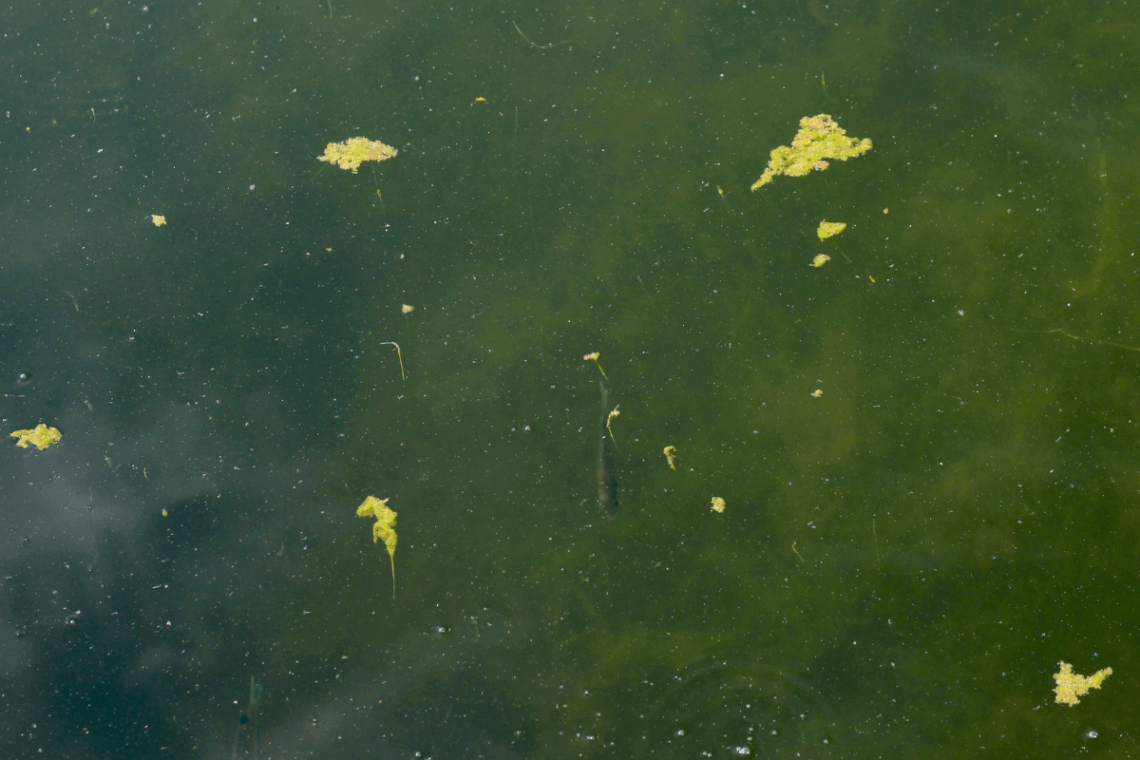
Murky water is one of the most frequent swim pond complaints. It’s often caused by:
- Suspended particles after construction
- Disturbed sediment
- High levels of organic waste
- Algae blooms
How to clear it up:
After construction, it’s important to be patient. Natural swimming ponds often appear cloudy in the first few weeks. This is completely normal and usually settles naturally as the pond’s ecosystem establishes itself – sometimes referred to as new pond syndrome.
Regular vacuuming and skimming are essential for maintaining water clarity. By removing surface debris and sludge from the base of the pond, you help keep the water cleaner, maintain the natural balance, and reduce the chances of algae growth in swim ponds.
The Michael Wheat System is designed to keep water clear without harsh chemicals. If you’re relying on basic or outdated filtration, it might be time for an upgrade.
2. Blanket Weed and Algae Overgrowth
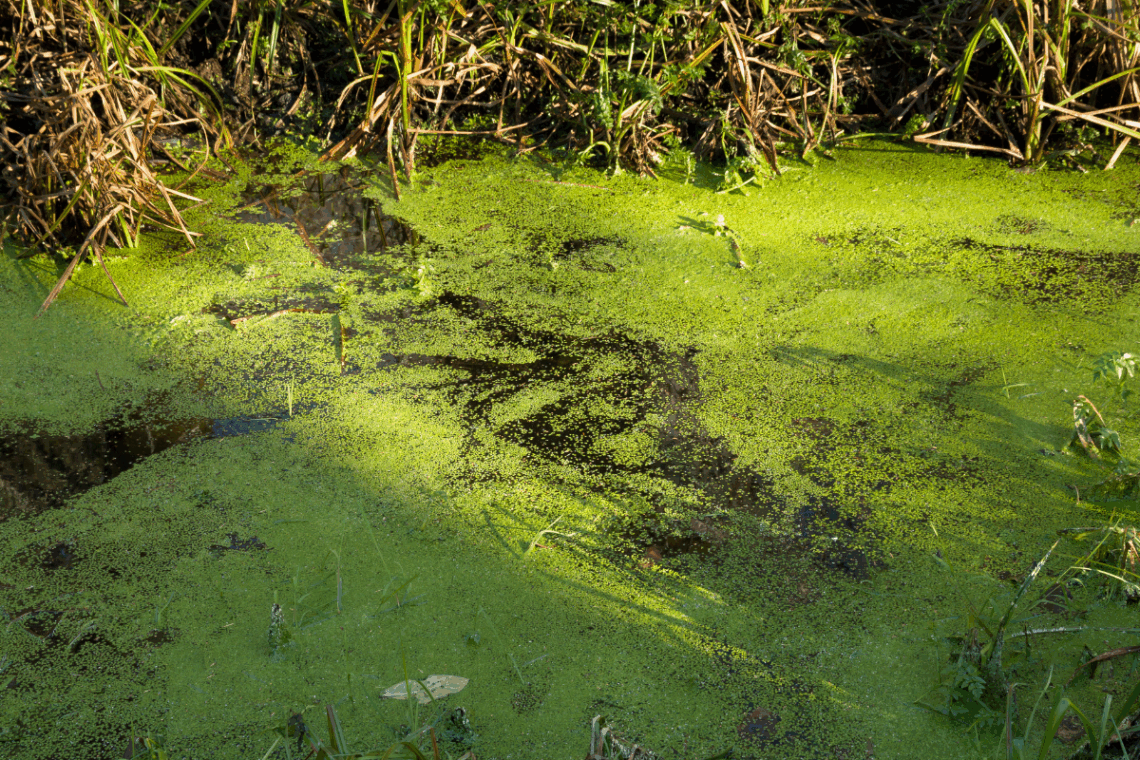
If your natural swimming pool is turning into a stringy green mess, blanket weed is the likely culprit. It thrives in nutrient-rich, sunlit water and is a common challenge for swim pond owners.
Algae issues are usually triggered by high phosphate and nitrate levels, which come from fish waste, decomposing plants, or using untreated tap water for top-ups.
How to manage it:
- Use Blanket Weed Gone: Blanket Weed Gone is a safe, natural treatment that gradually cuts off the weed’s food source.
- Manually remove visible weed to prevent it from clogging pumps and skimmers.
- Don’t top up with untreated tap water. This can introduce excess nutrients and disturb the pond’s ecological balance.
Maintaining consistent, low nutrient levels is key. Even after blanket weed is gone, regular checks are needed to keep algae at bay.
3. Leaks or Low Water Levels
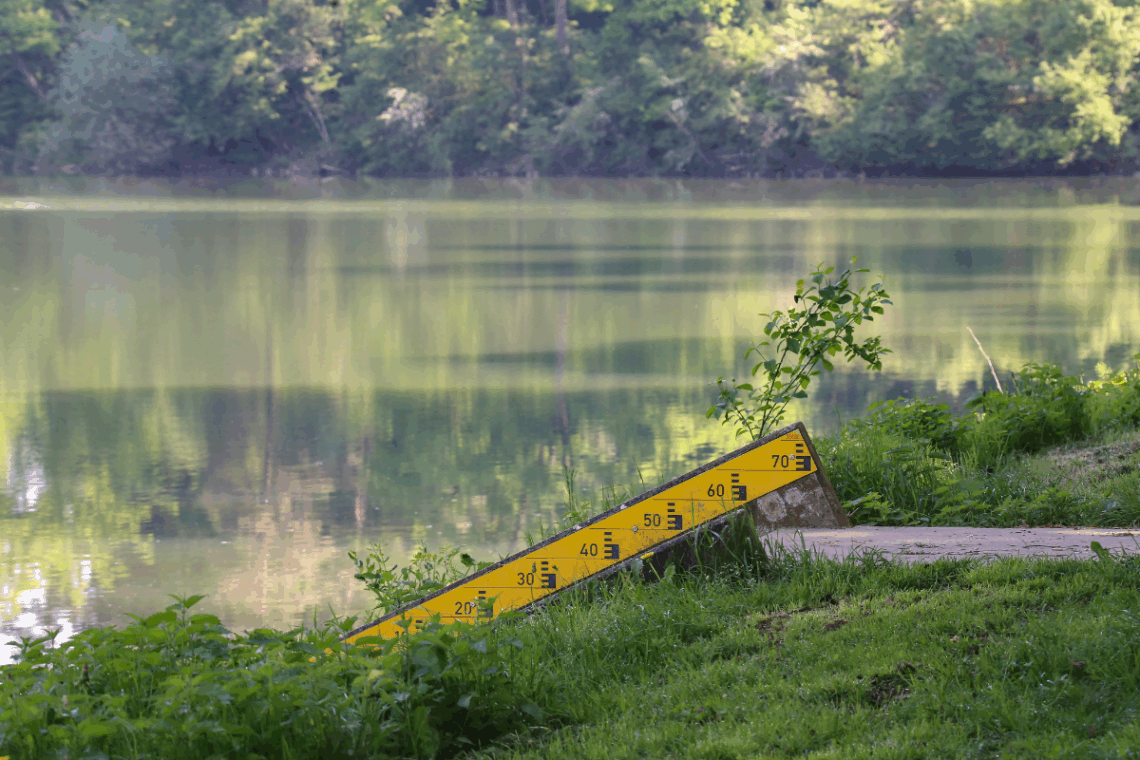
One of the most noticeable signs of a leak in your swim pond is a significant drop in water levels. If you notice the water level is dropping more than 1–2cm per day, especially when it’s not due to hot, dry weather, it’s worth investigating further.
Another indicator of a potential leak is saturated ground near the edge of the pond. If the ground around the pond feels unusually wet or boggy, it could be a sign that water is escaping from the pond, leading to excess moisture in the surrounding soil.
The process of identifying and fixing leaks involves thorough inspection, repairing any damaged areas, and sealing the edges to prevent future leaks.
Steps to fix it:
- Leak tracing: A careful, methodical inspection is the only way to pinpoint where water is escaping.
- Liner repairs or replacement: Minor punctures can often be patched, but large or multiple breaches may require a new liner.
- Edge sealing: Loose or poorly installed edging allows water to sneak behind the liner.
Incorporating the right materials at the bottom of the pond also helps prevent liner damage while supporting a healthy ecosystem.
4. Pump or Filtration Problems
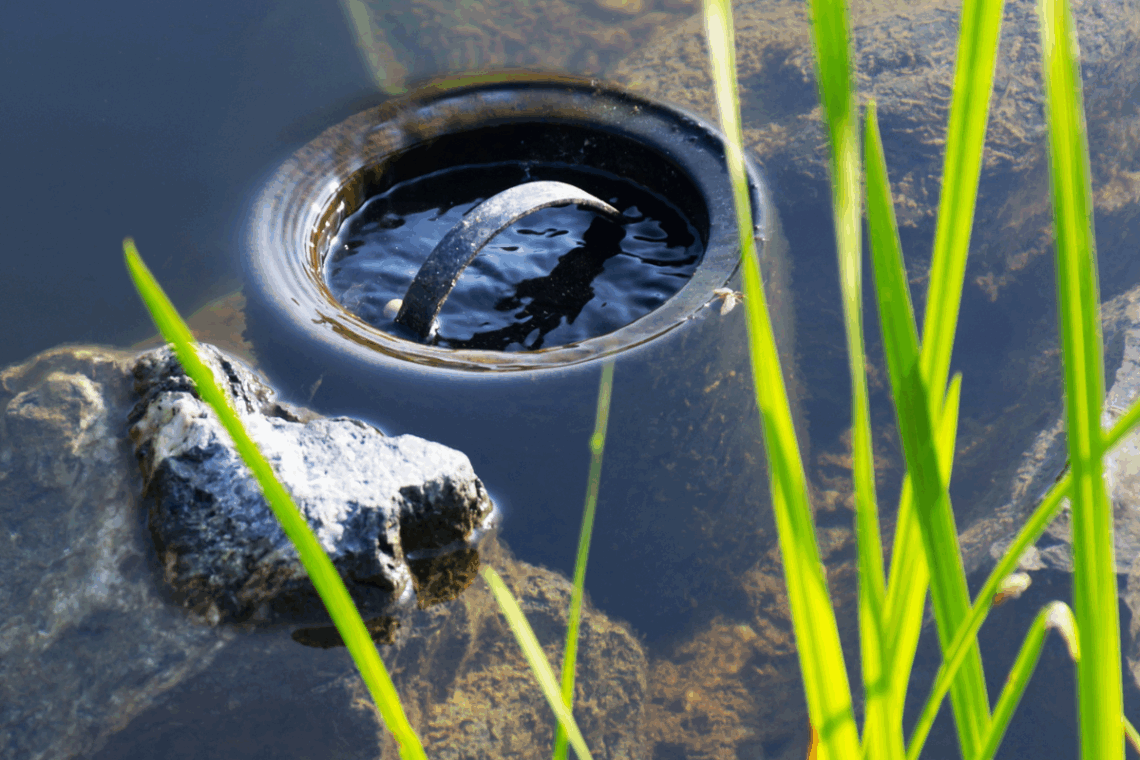
Poor circulation leads to murky water, debris build-up, and algae growth. A blocked or struggling pump is usually the culprit.
Keep things flowing with these checks:
- Clean filters, baskets, and skimmers weekly during peak use
- Check the pump intake for leaves or blanket weed
- Service or replace ageing equipment before failure occurs
Our Pond Maintenance Packages include professional servicing to keep pumps, filters, and UV filtration systems in top condition.
Note: The best swim ponds use pump and filter systems that work with – not against – nature. If your equipment is constantly failing, it might not be the right fit.
5. Poor Plant Growth in the Regeneration Zone
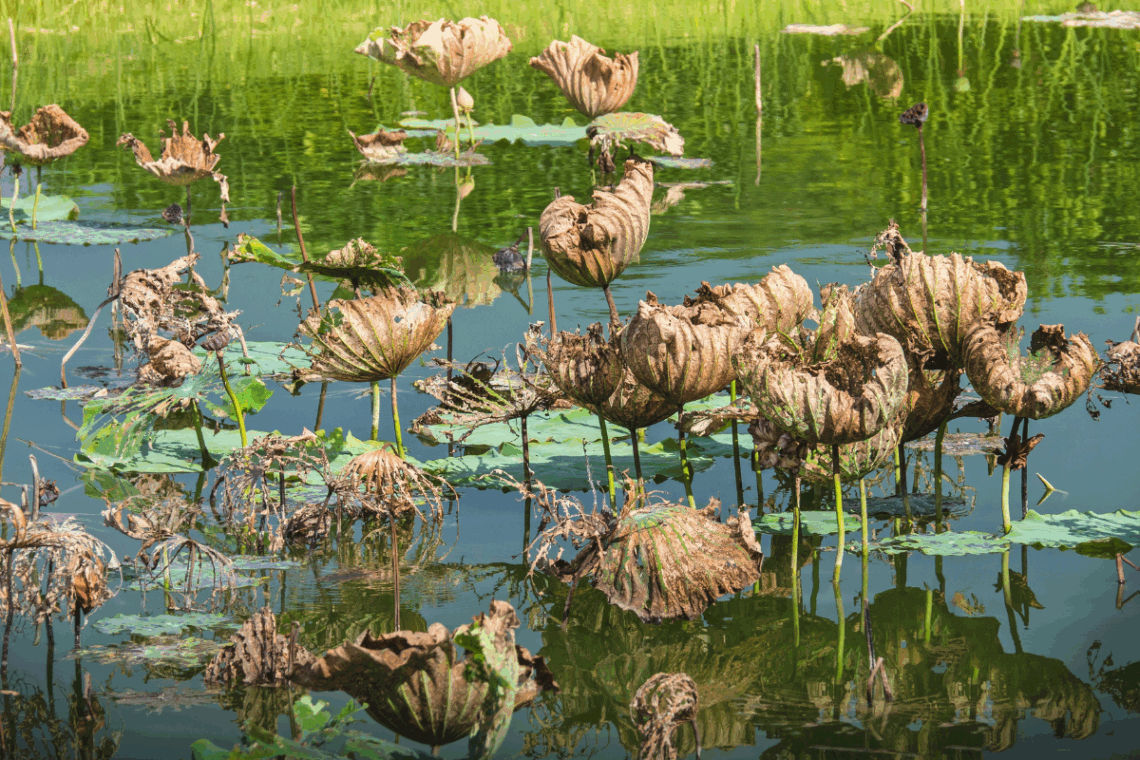
Pond plants are natural workhorses. They filter water, compete with algae, and support pond life. But when they’re struggling, so is your pond. If your plants in the regeneration zone aren’t thriving, several factors could be at play.
One common cause is incorrect planting depth. If the plants are not at the correct depth in the pond, they may struggle to establish and grow. Similarly, a lack of sunlight can hinder plant growth. Aquatic plants need sufficient sunlight to thrive, so if the area they’re planted in doesn’t get enough exposure, they may not flourish.
Micro-organisms also play a role in supporting plant growth in the regeneration zone. They help decompose organic matter, releasing nutrients that plants need to grow. Supporting plant life within the pond is essential for a healthy pond ecosystem, as it ensures the sustainability and longevity of the pond.
What to do:
- Replant at proper depths, following species guidelines
- Ensure 5–6 hours of sunlight daily in the regeneration zone
- Use oxygenators, marginals and floaters that thrive in your pond’s environment
- Support beneficial microbes that help release plant nutrients from organic matter
Our design team carefully plans the planting scheme to ensure your pond ecosystem develops correctly from the start.
6. Sludge Build-Up on the Pond Floor
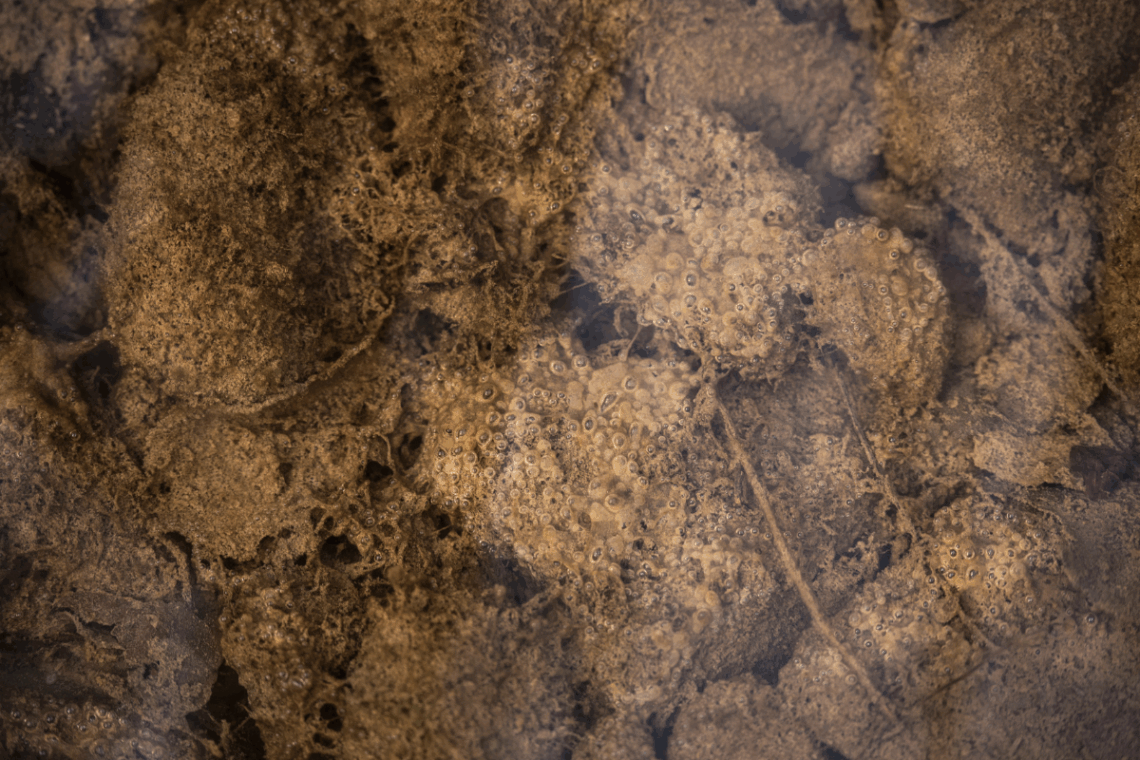
Over time, dead leaves, fish or wildlife waste, and decaying plants form a layer of sludge at the bottom. If left unchecked, it can turn anaerobic, leading to foul odours and poor water quality.
Sludge also feeds algae and harmful bacteria like Pseudomonas aeruginosa, which can pose health risks in stagnant water.
Keep your base clean:
- Vacuum the pond floor once or twice a year
- Schedule seasonal maintenance to manage organic waste
- Encourage microbial breakdown through proper planting and aeration
Too much sludge can choke your regeneration zone and affect filtration performance, so regular cleaning is a must.
7. Safety and Accessibility Concerns
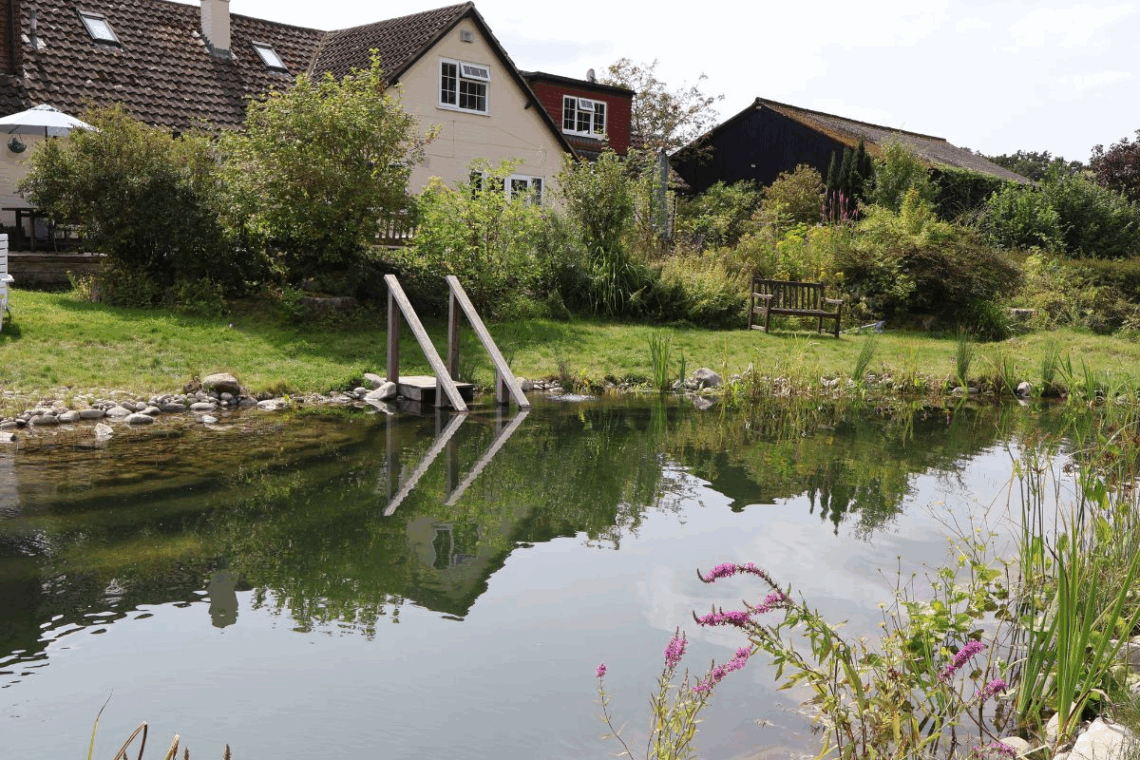
When your pond doubles as a wild swimming spot, safety and accessibility become top priorities. Slippery edges can be a real hazard, especially when wet – non-slip surfaces help prevent any accidental splashes (the wrong kind!).
It’s also important to think about who’s using the pond. Easy access points make a world of difference for kids, older adults, those with mobility issues, or anyone less confident in the water.
And don’t forget the area around the pond – overgrown paths and uneven ground can turn a peaceful wander into a stumble. A well-kept layout keeps things safe and enjoyable for everyone.
Make your pond safer:
- Install non-slip surfaces on entry points
- Use timber decking or flat paving stones to create stable areas
- Keep surrounding landscaping trimmed and tidy
We always consider safety in our designs, whether it’s for a family garden or a public swimming pond project.
Ongoing Maintenance: Keep Your Pond Healthy
A great swim pond shouldn’t be hard work – but it does need care.
Unlike conventional pools, swimming ponds rely on natural processes to stay clean. That’s why we offer tailored pond maintenance packages to take care of the essentials:
- Water quality checks
- Blanket weed control
- Jet cleaning and pond vacuuming
- Seasonal planting
- Filter and equipment inspections
We recommend quarterly servicing for all ponds and yearly service for filtration systems.
Curious how we keep our swim ponds clear, low maintenance and beautiful year-round? Discover the Michael Wheat System – our proven approach to natural swim pond design and filtration.
Need Help With Your Swim Pond?
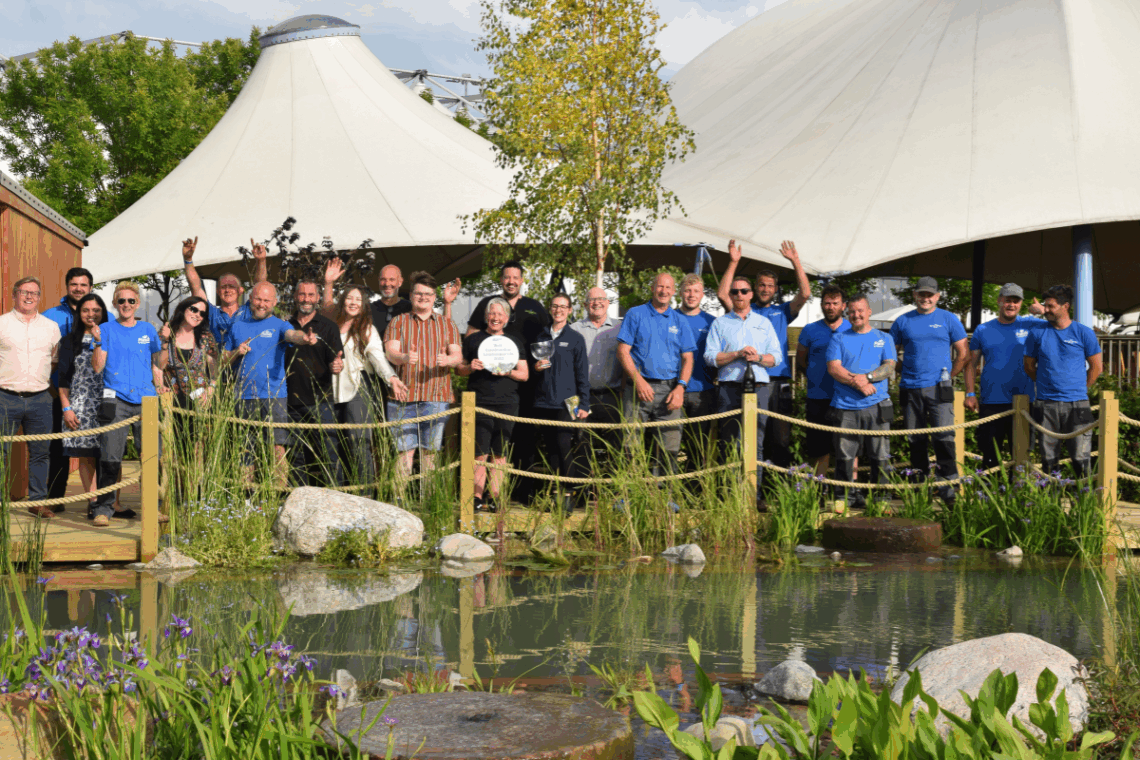
Whether you’re battling cloudy water, blanket weed, or just need a hand with maintenance, we’re here to help.
Swim ponds aren’t just for summer – they’re long-term water features that grow more beautiful each year when looked after properly.
Visit our Swimming Pond Problems page for more insights or contact us directly to speak to our team. We’ve helped hundreds of pond owners keep their water clear, safe, and ready for swimming – and we’d love to help you too.